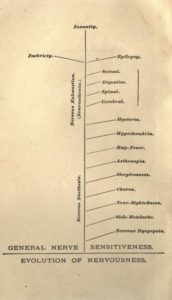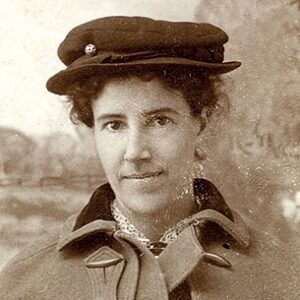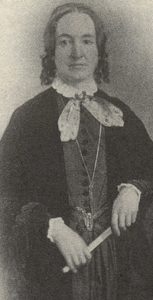We all know that women’s rights have been late to the party. State laws didn’t start allowing us to control our own earnings until the mid-nineteenth century, and in many states, women couldn’t manage their own property after they were married. Laws prohibited women from doing things that men took for granted (like smoking in public or using contraception) on the pretext of “protecting women’s health.” Divorce, extremely difficult to obtain, was fraught with social and financial peril (Today’s “no fault” variety didn’t come into play until the 1960’s!). Children were the “property” of the husband, not the wife–she had no legal right to them if she left her marriage, no matter how disastrous the union turned out to be. And, of course, women didn’t get the right to vote in federal elections until 1920, fifty years after the Fifteenth Amendment granted that right to men regardless of color (although it took nearly a century for that right to be solidified without prejudice).
So, it isn’t surprising that when progressive ideas about treating the mentally ill led to the construction of state mental hospitals across the country, many of the institutions were used to keep women in their place. In researching my latest novel, The Madness of Mrs. Whittaker, I found several cases where women were unjustly committed to such asylums under the guise of treating them for some form of “neurasthenia.”

Neurologist George Miller Beard [image via Pinterest]
 of maladies that seemed to afflict primarily the middle and upper classes during the late nineteenth-early twentieth century. According to Beard and countless physicians who followed him, these patients were sufffering from the “stress” of modern American life. Symptoms included headaches, rashes, painful menstrual periods and melancholy, all the way up to overly sexual behavior (called “lasciviousness”), excessive anger, alcoholism, drug abuse, and suicidal thoughts–in short, any behavior that was not in line with the societal dictates of the time.
of maladies that seemed to afflict primarily the middle and upper classes during the late nineteenth-early twentieth century. According to Beard and countless physicians who followed him, these patients were sufffering from the “stress” of modern American life. Symptoms included headaches, rashes, painful menstrual periods and melancholy, all the way up to overly sexual behavior (called “lasciviousness”), excessive anger, alcoholism, drug abuse, and suicidal thoughts–in short, any behavior that was not in line with the societal dictates of the time.
I explore how men were treated for neurasthenia in my novel The Price of Compassion (Book Four of “The Golden City” series). The Main character, Dr. Tom Justice, has gone through a traumatic experience that results in a physical impairment. The prescription for men back then was action a la Teddy Roosevelt (who was said to suffer from neurasthenia himself). Rigorous physical activity was supposed to get rid of the stress–not a bad idea!
Unfortunately, the opposite was true for women. Doctors (overwhelmingly male) told them the cure for their emotion-driven ailment, no matter what it was, was complete removal from the stress of everyday life. Female patients were to have as little stimulus as possible in the hope that their “nervous disorder” would calm down and go away.

Charlotte Perkinds Gillman [via wikimedia commons.org]

New York Lunatic Asylum [image via Wikimediacommons.org]
Thus, if you were a woman who didn’t know your place, and you had a spouse or family member who wanted you out of the picture, it didn’t take much to have you committed against your will so that you could “relearn” what it meant to be an acceptable female in society.
I came across a newspaper article from 1903 in which this happened, and I used it as the historical seed from which my novel grew. A young mother who happened to believe in Spiritualism (a religious movement I also cover in the book) was accused of being insane by her mother and sister, and was committed against her will to an asylum in South Dakota. How she dealt with her situation inspired me to write my own version, and The Madness of Mrs. Whittaker is the result.

Elizabeth Packard
[image via Wikipedia]
Illinois law in 1860 said that a public hearing had to be held before a woman could be committed; however an exception was made for a married woman. Her husband could commit her without a hearing and without his wife’s permission! Needless to say, Mrs. Packard was mad as hell and spent the next three years working to get herself released. Eventually her children pressured the asylum’s doctors enough to release her and they did so–after pronouncing her “incurable.” When she returned home, her husband locked her in an upstairs room and nailed the window shut! Luckily she was able to get a message to a friend, who helped her escape and arranged for a hearing at which she was finally pronounced sane–after hearing from male witnesses, by the way, who agreed that it didn’t make a woman insane just because she disagreed with you!
In the meantime, Elizabeth’s estranged husband had left the state, taking the children with him; it took several more years for her to right that particular wrong. During that decade and beyond, she worked tirelessly, through speaking, writing and petitioning state legislatures, to get laws passed that protected women from the horrors she’d experienced.
We’ve come a long, long way from those trying times, and we have strong-minded and strong-willed women like Elizabeth Packard to thank for many of the rights we take for granted today.



Hi, this is a topic that I have been interested in for some time. I couple of novels I have read that have dealt with this are:-
What She Left Behind
by Ellen Marie Wiseman
This occurs in the late 1920’s which shows how little power women had even in the twentieth century.
The Imaginary Gentleman – A Regency Intrigue
https://www.penguin.com.au/books/the-imaginary-gentleman-9781741660647
This is a well written novel that shows how helpless women were during this period. The woman refuses to marry the man her family wants her to and so she is accused of imagining another suitor and packed off to an asylum.
Thanks for the interesting blog. Regards, Isabel